Everything You Need to Know About Adding a Garden Arbour
Discover how an arbour can help define and enhance your home, garden and landscape
Marianne Lipanovich
22 May 2022
Houzz Contributor. I'm a California-based writer and editor. While most of my projects are garden-based, you might also find me writing about home projects and classical music. Away from the computer, I'm found in the garden (naturally), on my bike, or ice-skating outdoors (yes, that is possible in California). I'm also willing to taste-test anything that's chocolate.
Houzz Contributor. I'm a California-based writer and editor. While most of my projects... More
When you think of an arbour, the first image that comes to mind might be that of a garden entry arch covered in blooms. It’s a classic look, and one that fits the simplest definition of an arbor: two side panels with a connecting top piece that adds a vertical element to the garden. But arbours can be far more than just this traditional look. They can range in size, design and materials to make a distinctive statement in any style and in almost any area of your landscape.
Read on to learn more about the design basics of an arbour, as well as the best materials to use and how to go about adding one to your landscape.
Read on to learn more about the design basics of an arbour, as well as the best materials to use and how to go about adding one to your landscape.
How to Use an Arbour
An arbour can take on many roles in a landscape, such as defining an entrance or passageway, adding support for climbing plants, framing a garden feature and creating a shady spot to relax. Arbours often play several of these roles at once.
An arbour can take on many roles in a landscape, such as defining an entrance or passageway, adding support for climbing plants, framing a garden feature and creating a shady spot to relax. Arbours often play several of these roles at once.
Entrance
Use an arbour to highlight entry points to your yard, garden or home. Combining an entrance gate and an arbour at the front of your home or as the entry point to your backyard is a classic look that works with most styles and materials.
Use an arbour to highlight entry points to your yard, garden or home. Combining an entrance gate and an arbour at the front of your home or as the entry point to your backyard is a classic look that works with most styles and materials.
Stand-in for a door
Equally effective is the use of an arbour to indicate transitions between different areas of your landscape, such as to separate a vegetable garden, a children’s play area or your own secret garden.
Find a landscape architect or designer near you on Houzz for a custom arbour design
Equally effective is the use of an arbour to indicate transitions between different areas of your landscape, such as to separate a vegetable garden, a children’s play area or your own secret garden.
Find a landscape architect or designer near you on Houzz for a custom arbour design
Passageway
Expand the depth of an arbour or combine several smaller arbour structures in a row to define a path or walkway. Installing a series of arbours allows you to stretch the look for some distance.
Expand the depth of an arbour or combine several smaller arbour structures in a row to define a path or walkway. Installing a series of arbours allows you to stretch the look for some distance.
Shade structure
Arbours can also give you a shady spot to grow plants that prefer a little less sun. Set one against a fence or wall to provide filtered light and some protection for plants such as ferns, hostas and hydrangeas.
Arbours can also give you a shady spot to grow plants that prefer a little less sun. Set one against a fence or wall to provide filtered light and some protection for plants such as ferns, hostas and hydrangeas.
Frame
Place an arbour around a garden fountain or other landscape feature to show it off. The arbour will immediately draw the eye and give the feature even more prominence in your space.
Place an arbour around a garden fountain or other landscape feature to show it off. The arbour will immediately draw the eye and give the feature even more prominence in your space.
Another option is to use an arbour to frame a part of your home. A full or partial arbour over a garage door or along a wall helps soften the look and adds a three-dimensional element.
Seating area
Rather than adding plants or a garden focal point beneath an arbour, create a seating area. A simple bench or a swing can fill the space. Another option is to make the arbour deep enough to have benches facing each other on both sides, with access through the middle.
Rather than adding plants or a garden focal point beneath an arbour, create a seating area. A simple bench or a swing can fill the space. Another option is to make the arbour deep enough to have benches facing each other on both sides, with access through the middle.
Support for plants
No matter what other purpose your arbour serves, adapt the time-honoured tradition of using it as a way to highlight your prized climbing plants. Vines, roses, climbing perennials and shrubs all appreciate the chance to stretch out towards the sun.
Grapes have long been used as a topper on arbours, but consider branching out with other fruits, such as passionfruit (as long as your arbour is sturdy). You can also use an arbour as a support for vegetables, such as tomatoes, peas or beans. Think about being able to pluck a ripe tomato every time you enter your garden!
No matter what other purpose your arbour serves, adapt the time-honoured tradition of using it as a way to highlight your prized climbing plants. Vines, roses, climbing perennials and shrubs all appreciate the chance to stretch out towards the sun.
Grapes have long been used as a topper on arbours, but consider branching out with other fruits, such as passionfruit (as long as your arbour is sturdy). You can also use an arbour as a support for vegetables, such as tomatoes, peas or beans. Think about being able to pluck a ripe tomato every time you enter your garden!
Hiring a Professional
A licensed landscape architect or designer can usually handle most arbour projects, including the footings or anchors. Some arbours, including those purchased from a nursery or the outdoor section of a large home retailer, can be assembled and set in place by an experienced homeowner, though it’s wiser to find a licensed carpenter to complete these smaller projects to ensure their secure construction.
A licensed landscape architect or designer can usually handle most arbour projects, including the footings or anchors. Some arbours, including those purchased from a nursery or the outdoor section of a large home retailer, can be assembled and set in place by an experienced homeowner, though it’s wiser to find a licensed carpenter to complete these smaller projects to ensure their secure construction.
Shape
Timber and timber-look arbours can vary from a simple structure of two posts with lattice between them and on top, to elaborate structures with individualised design elements.
Using beams and rafters overhead is an easy way to add interest to a basic arbour design. Finishing the corners with decorative bracing or changing the supports to rounded pillars are other ways to customise your design.
If you want to take your arbour to the next level, turn the flat roof into a peak or an arch. Extending the arbour on either side or making it deeper will also give it more presence in your yard.
Timber and timber-look arbours can vary from a simple structure of two posts with lattice between them and on top, to elaborate structures with individualised design elements.
Using beams and rafters overhead is an easy way to add interest to a basic arbour design. Finishing the corners with decorative bracing or changing the supports to rounded pillars are other ways to customise your design.
If you want to take your arbour to the next level, turn the flat roof into a peak or an arch. Extending the arbour on either side or making it deeper will also give it more presence in your yard.
Many metal arbours are topped with a gentle, continuous arch, which works well for almost any landscape design. Squaring off the top is another popular option. If you’re looking for a more striking style, a gothic-inspired arch at the top might be for you. To add more interest, look for double arches that incorporate a design between the two edges.
A semi-circular or full-circle metal arch is a contemporary take on a metal arbour (or a version of a moon gate). Either a single- or double-arch design will create a garden focal point. A double arch has the added advantage of providing support for any number of plants.
There’s no rule that your arbour’s timber posts, if you’re using them, need to be anchored directly to the ground. Create a more stately look, especially at an entrance, by installing stone, concrete or masonry pillars as the base.
Size
The size of your arbour depends on how you plan to use it, though use these rough dimensions as a general guide:
The size of your arbour depends on how you plan to use it, though use these rough dimensions as a general guide:
- Height: Most arbors are 2.1 to 2.4 metres tall – you’ll need to allow enough headroom for a grown adult to walk under it, plus extra room if you’re introducing climbing plants.
- Width: The width can vary, from 900 centimetres to 1.2 metres for an arbour over a gate, a bit less to show off a garden fountain, and up to three metres or more to stretch along a wall or create a focal point in a space. If you’re opting for a longer arbour, consider a row of connected matching designs to keep the structure stable, or add a few supports for every metre of length.
- Depth: Most arbours are fairly shallow, perhaps the depth of a lattice panel, but you can adapt to fit your needs. A deeper arbour will allow you to add a seat or seats, provide the feel of a true passageway or cover a garden path or specimen plant.
Material Options for an Arbour
Timber has long been the typical material for arbours, with metal a close second. New options include wood composites and vinyl. You can also mix different materials for a custom look.
Browse more beautifully designed gardens for inspiration
Timber has long been the typical material for arbours, with metal a close second. New options include wood composites and vinyl. You can also mix different materials for a custom look.
Browse more beautifully designed gardens for inspiration
Timber
A classic timber arbour is a landscape staple. Wood is a top choice for outdoor projects and is often the least expensive option. It generally lasts at least 10 years, and even 20 or more if you maintain it.
When possible, choose locally and responsibly grown timber that’s naturally rot-resistant. Boards and posts are usually the first choices for arbours, but you can add a more informal or natural feel by using unfinished branches or tree limbs.
A classic timber arbour is a landscape staple. Wood is a top choice for outdoor projects and is often the least expensive option. It generally lasts at least 10 years, and even 20 or more if you maintain it.
When possible, choose locally and responsibly grown timber that’s naturally rot-resistant. Boards and posts are usually the first choices for arbours, but you can add a more informal or natural feel by using unfinished branches or tree limbs.
Timber requires more maintenance than most other outdoor materials. Sealing natural wood will protect it from greying off – which, on the other hand, you may prefer. For more protection, stain or paint your chosen timber. All of these treatments will need to be redone every year or so.
You’ll also want to check annually for any damage, such as broken boards or chips, and for rot. Wood can also be damaged by the humidity and moisture of plants growing on it or even by the vines themselves. Choosing a twining vine rather than one that clings or wraps around the wood can lessen the damage.
You’ll also want to check annually for any damage, such as broken boards or chips, and for rot. Wood can also be damaged by the humidity and moisture of plants growing on it or even by the vines themselves. Choosing a twining vine rather than one that clings or wraps around the wood can lessen the damage.
Timber composite
This option, which is a blend of different materials, including recycled plastic, has come a long way in both looks and colour choices. Timber composite is more expensive than wood, but it’s more durable, can handle harsher weather, is easier to care for and will last longer, usually around 25 years or more.
Maintenance usually consists of rinsing the composite with water and scrubbing any stubborn grime with a diluted detergent solution. You should also check periodically for any damage and repair it as soon as you spot any.
This option, which is a blend of different materials, including recycled plastic, has come a long way in both looks and colour choices. Timber composite is more expensive than wood, but it’s more durable, can handle harsher weather, is easier to care for and will last longer, usually around 25 years or more.
Maintenance usually consists of rinsing the composite with water and scrubbing any stubborn grime with a diluted detergent solution. You should also check periodically for any damage and repair it as soon as you spot any.
Metal
Metal arbours can be deceptively fragile-looking due to their thin profiles, but in reality they’re very tough. You can use almost any metal to form an arbour: aluminium, stainless steel, wrought iron, weathering steel such as Corten, even pipes or rebar.
Metal, except for the last two options, is usually more expensive than wood, but it’s extremely durable – a quality metal arbour lasts 20 years or more. Metal is good for harsh climates and is easy to care for.
Metal arbours can be fabricated to almost any size and shape. The metal won’t fade and generally can be cleaned periodically with water to preserve its looks.
Metal arbours can be deceptively fragile-looking due to their thin profiles, but in reality they’re very tough. You can use almost any metal to form an arbour: aluminium, stainless steel, wrought iron, weathering steel such as Corten, even pipes or rebar.
Metal, except for the last two options, is usually more expensive than wood, but it’s extremely durable – a quality metal arbour lasts 20 years or more. Metal is good for harsh climates and is easy to care for.
Metal arbours can be fabricated to almost any size and shape. The metal won’t fade and generally can be cleaned periodically with water to preserve its looks.
Aluminium and stainless steel are popular mid-priced options. They’re also easy to care for, generally requiring only a rinse with a hose and perhaps scrubbing with a diluted detergent solution for stubborn spots. Aluminium is lightweight and rust-resistant and is good for damp climates.
You can also find powder-coated aluminium, which will allow you to choose a colour you love. Its light weight does mean it won’t be as sturdy as other options. Stainless steel is heavier and stronger than aluminium but with the same rust resistance. Stainless steel can chip, making it vulnerable to rust, so repair any damage as soon as you can.
Wrought-iron arbours are more expensive than aluminium and steel, but they add a sense of permanence and tradition to the garden. Wrought iron is highly durable, but chips will need to be sanded and refinished to prevent rust. Expect wrought iron to last for decades.
You can also find powder-coated aluminium, which will allow you to choose a colour you love. Its light weight does mean it won’t be as sturdy as other options. Stainless steel is heavier and stronger than aluminium but with the same rust resistance. Stainless steel can chip, making it vulnerable to rust, so repair any damage as soon as you can.
Wrought-iron arbours are more expensive than aluminium and steel, but they add a sense of permanence and tradition to the garden. Wrought iron is highly durable, but chips will need to be sanded and refinished to prevent rust. Expect wrought iron to last for decades.
For a more casual look, pipes and rebar are inexpensive choices that add an industrial touch. On the other end of the scale, weathering steel such as Corten – while one of the most expensive options – will give you a rustic-contemporary look.
Vinyl
Vinyl gets great marks for its durability in the garden. It won’t rot or shrink, can handle harsh weather and environments, including areas that are warm and damp, and will last 30 years or more. It cleans up with periodic hosing and tackling of stubborn grime with a diluted detergent mixture. A drawback for many has been a limited colour choice, but that is also improving.
Vinyl is more expensive than wood, although its life span can offset that. It’s difficult to damage, but repairs can be tricky.
Vinyl gets great marks for its durability in the garden. It won’t rot or shrink, can handle harsh weather and environments, including areas that are warm and damp, and will last 30 years or more. It cleans up with periodic hosing and tackling of stubborn grime with a diluted detergent mixture. A drawback for many has been a limited colour choice, but that is also improving.
Vinyl is more expensive than wood, although its life span can offset that. It’s difficult to damage, but repairs can be tricky.
Other Considerations for Adding an Arbour
Permits and codes
While most arbours, especially those that you purchase off-the-shelf, probably won’t require a permit, it’s always wise to check first. Local council controls can vary widely, even in neighbouring suburbs. Your arbour should be covered under the required permits if it’s part of a larger landscaping project. Otherwise, check any regulations regarding heights, setbacks and locations.
Permits and codes
While most arbours, especially those that you purchase off-the-shelf, probably won’t require a permit, it’s always wise to check first. Local council controls can vary widely, even in neighbouring suburbs. Your arbour should be covered under the required permits if it’s part of a larger landscaping project. Otherwise, check any regulations regarding heights, setbacks and locations.
Project duration
Most arbours should take only a few days to build and install. This generally includes the time required for any concrete to set. A more complex design will take longer, as will an installation that involves concrete or masonry posts. If you want a custom-order metal design, you’ll need to check on the fabrication time.
Most arbours should take only a few days to build and install. This generally includes the time required for any concrete to set. A more complex design will take longer, as will an installation that involves concrete or masonry posts. If you want a custom-order metal design, you’ll need to check on the fabrication time.
When to do this project
A freestanding arbour that doesn’t require any support, such as those you can buy pre-assembled, can be added any time of year as long as you can set it into or on the ground – just try to avoid undertaking the project during wet seasons.
Your turn
Do you have an arbour at home or would you like to add one to your landscape design? In the Comments below, tell us what you love about these alfresco forms. And remember to like this story, save the images for inspiration and join the conversation.
More
Ready for more garden advice? Read about these 3 Small Outdoor Spaces… and How They Did It
A freestanding arbour that doesn’t require any support, such as those you can buy pre-assembled, can be added any time of year as long as you can set it into or on the ground – just try to avoid undertaking the project during wet seasons.
Your turn
Do you have an arbour at home or would you like to add one to your landscape design? In the Comments below, tell us what you love about these alfresco forms. And remember to like this story, save the images for inspiration and join the conversation.
More
Ready for more garden advice? Read about these 3 Small Outdoor Spaces… and How They Did It
Related Stories
Renovating Advice
How Do I Find, Assess & Hire the Right People for My Renovation?
Do you need a kitchen designer or a joiner? An architect or an interior designer? Find out with our essential reno guide
Full Story
Renovation Guides
What Key Measurements & Room Dimensions Should I Know for a Reno?
Read practical information about key room measurements and minimum clearances for fittings and fixtures in every room
Full Story
Bedrooms
12 Decorating Tips to Make Any Bedroom Look Better
By Anne Ellard
Want to know how to make your bedroom look better? Here are 12 great tricks
Full Story
Renovation Guides
Room by Room: Experts on Ways to Avoid Common Renovation Blunders
From the kitchen to the garden, and all areas in between, experts identify common mistakes and share priceless insights
Full Story
Bathroom Expert Advice
5 Reasons Your Bathroom Smells Funky (and How to Fix the Problem)
A plumber reveals five reasons your bathroom might smell like sewage or emanate a musty odour
Full Story
Kitchen Renovations
From Planning to Pendants: Kitchen Lighting Essentials
By Joanna Tovia
This valuable guide will give you all you need to know about choosing kitchen lighting for fabulous form and function
Full Story
Living Rooms
The Full Picture: How High Should Your TV Be?
By Matt Clawson
We look at an important question to consider when locating your television: how high should you set it?
Full Story
Bathrooms
All the Dimensions You Need to Know for Your Bathroom Makeover
Fit everything comfortably in a small or medium-size bathroom by knowing standard dimensions for fixtures and clearances
Full Story
Renovation Guides
How to Control the Cost of Your Renovation, Room by Room
Where to save, where to spend (and all the tricks in between) for keeping the cost of your renovation on track
Full Story
Architecture
Renovation Insight: How to Choose an Architect
A great architect can turn your dream home into reality – three industry experts reveal where to look for the right one
Full Story



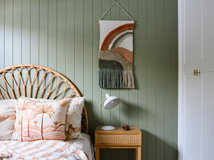

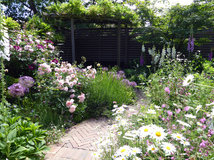
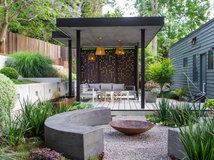
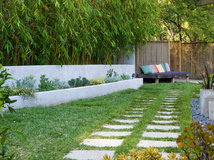
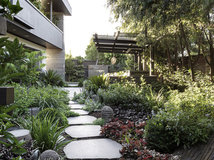

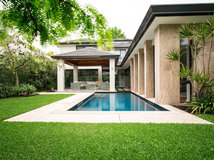

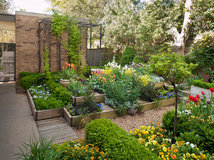

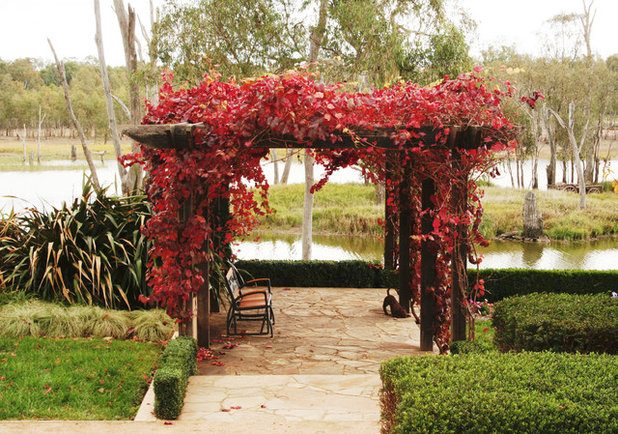
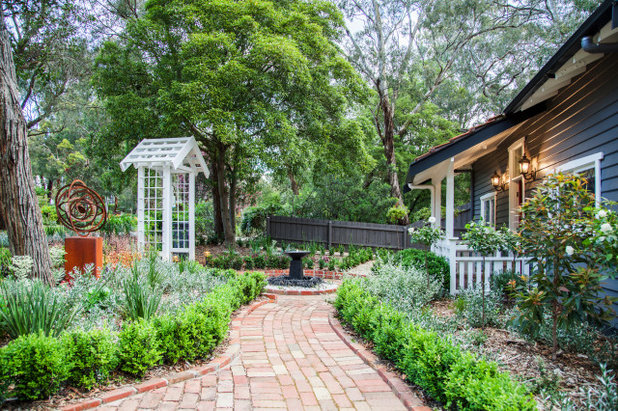
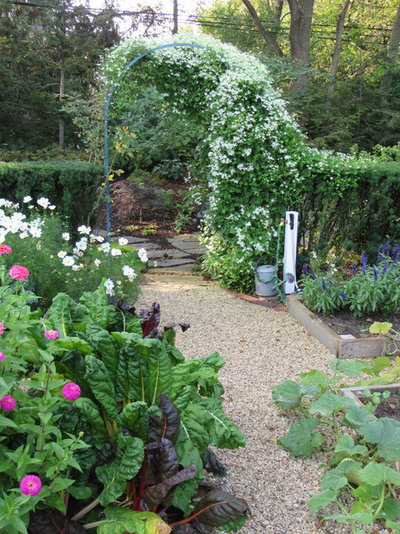
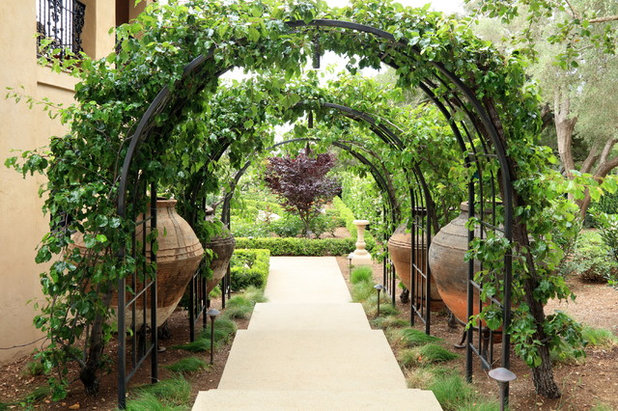
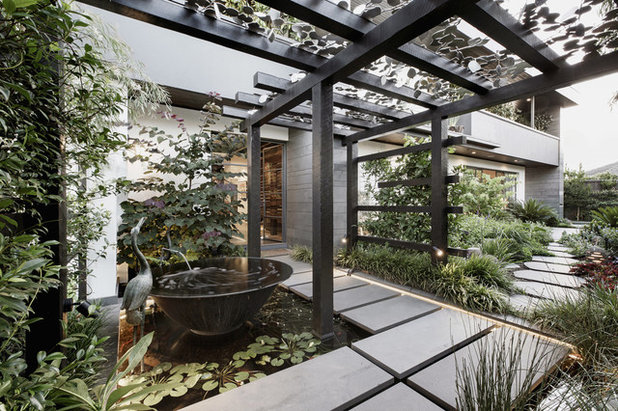
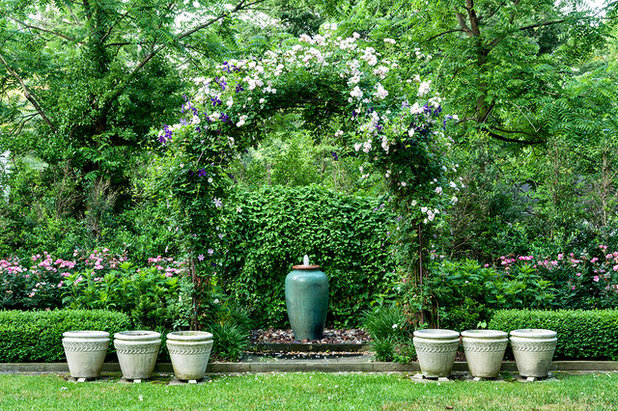
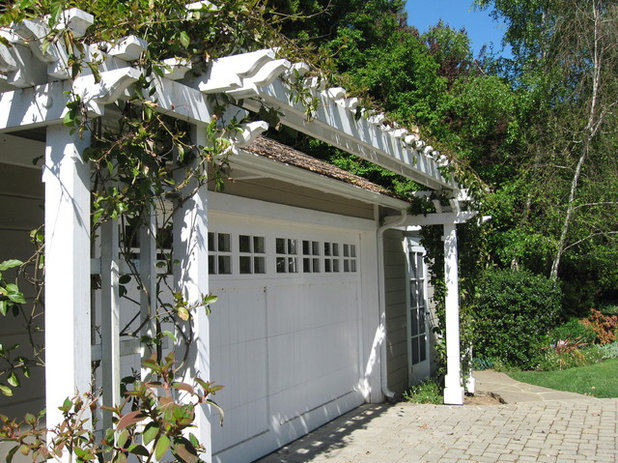
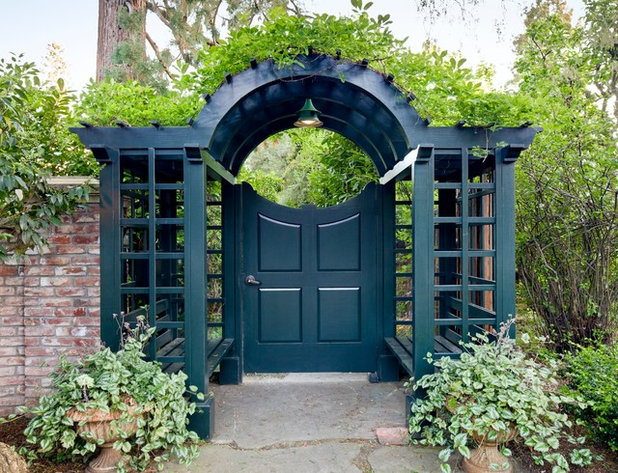
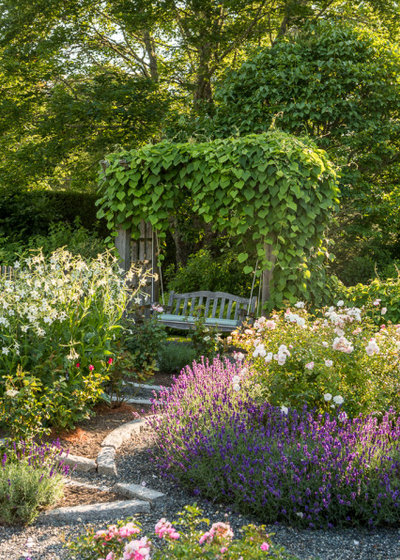
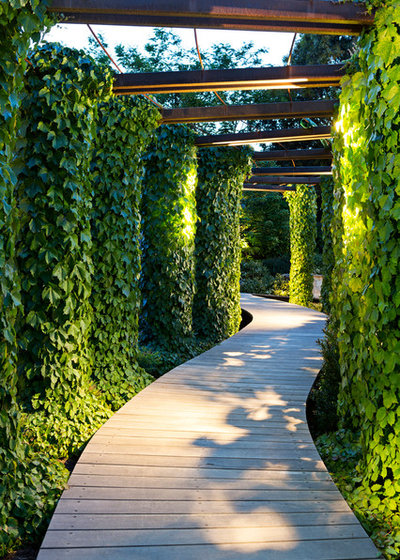
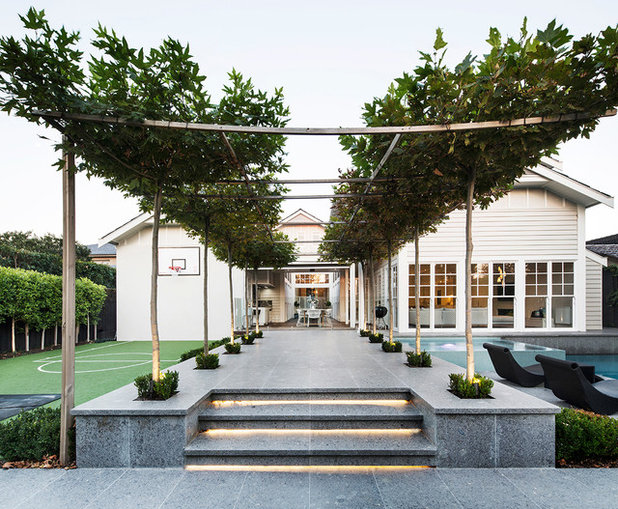

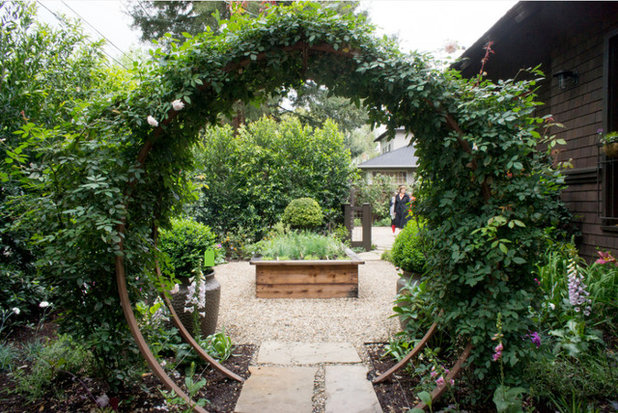
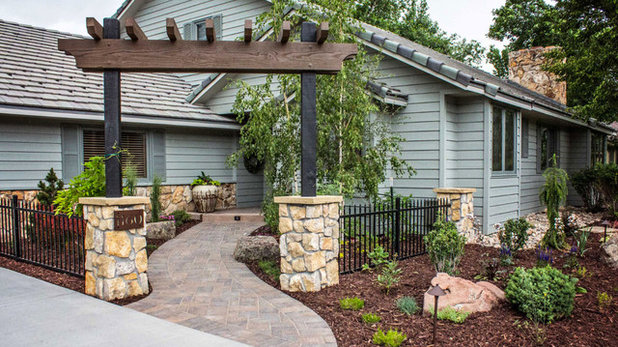
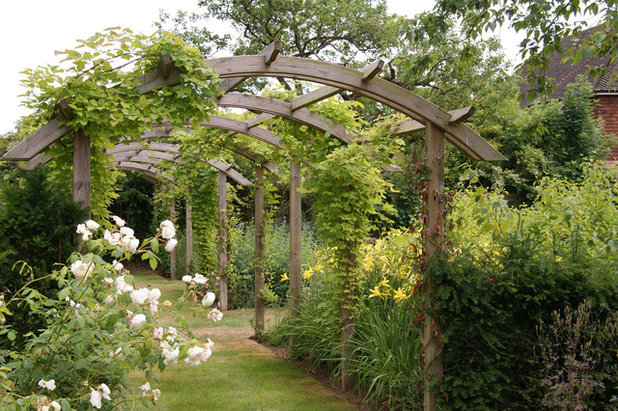
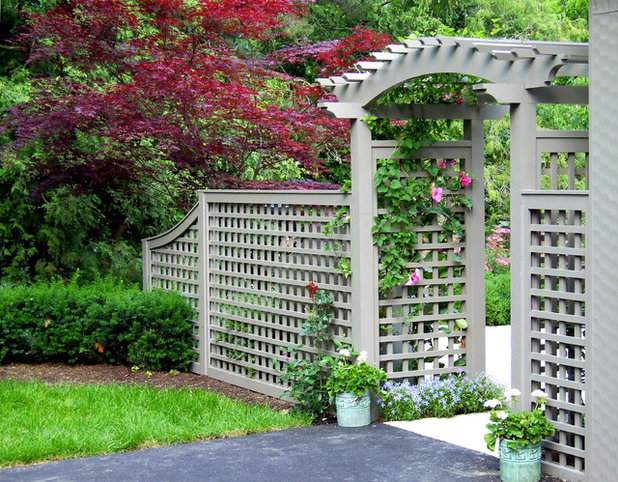
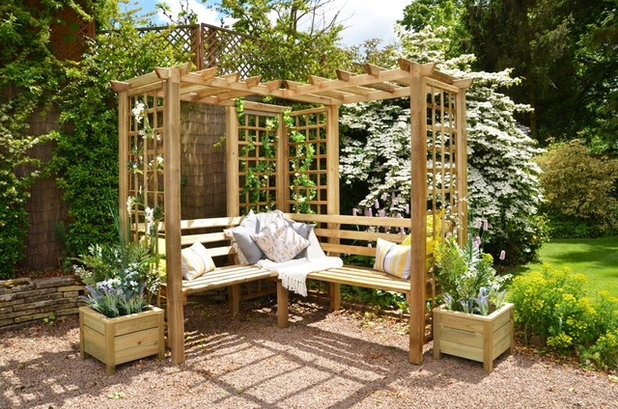
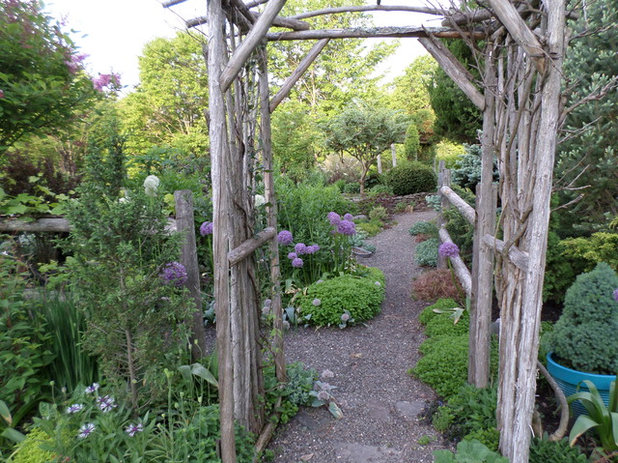
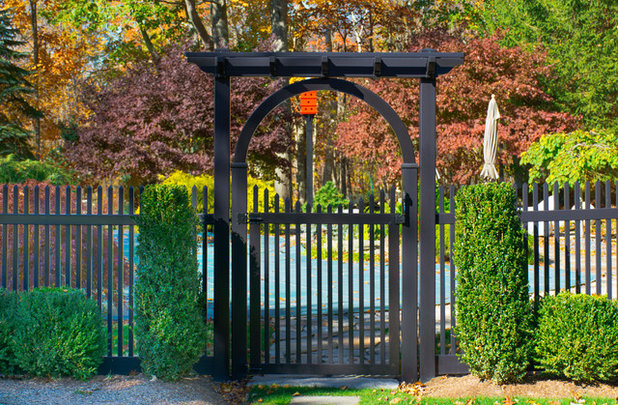
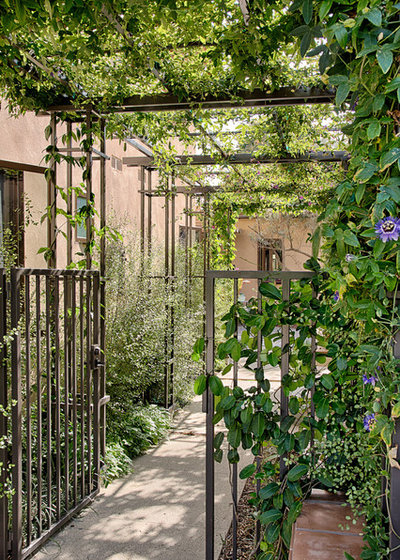
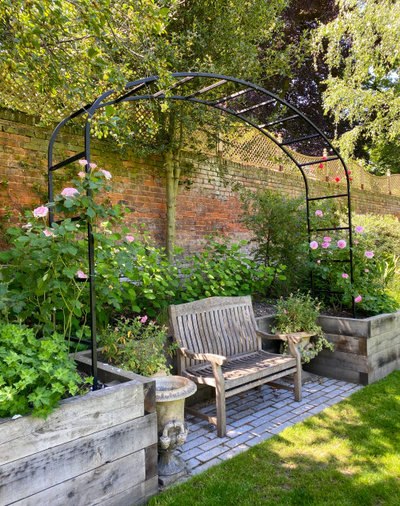
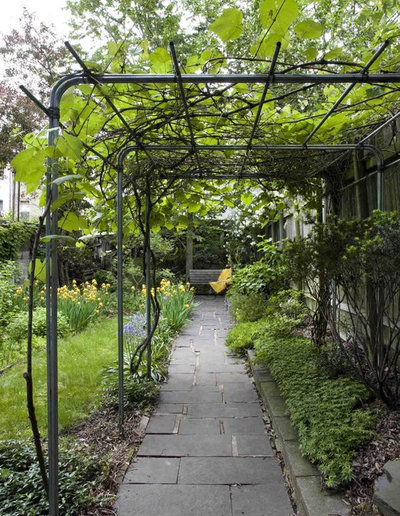
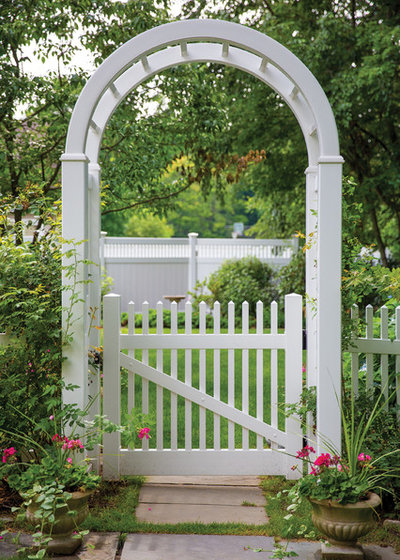
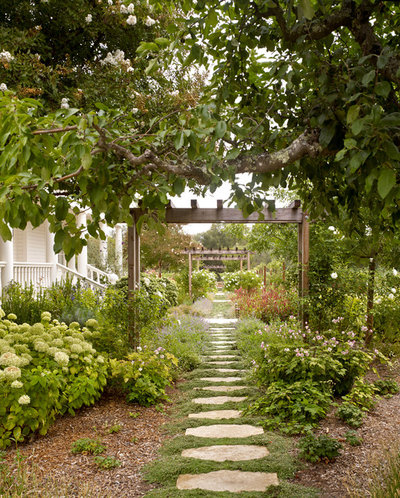
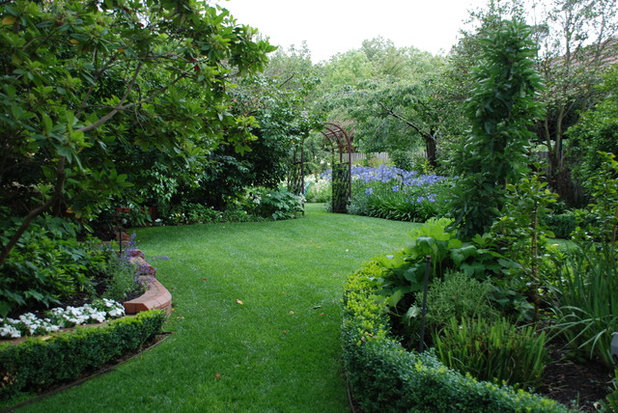
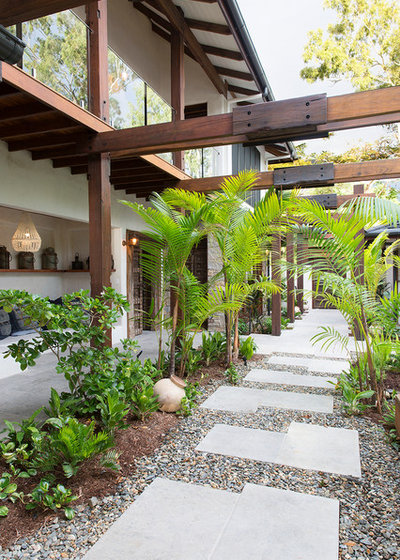

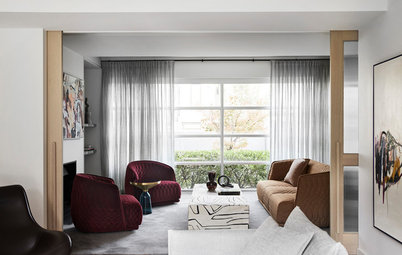
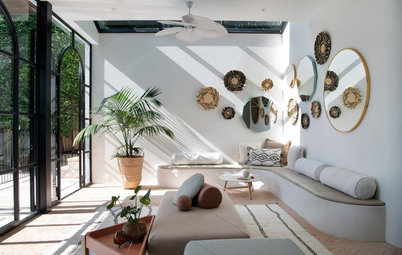
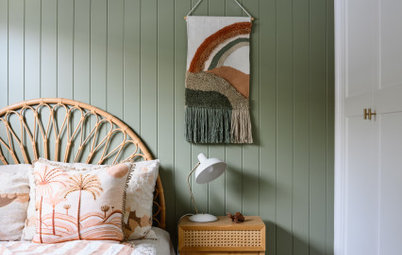
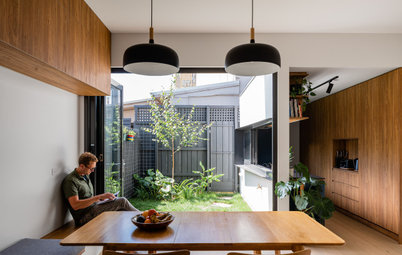
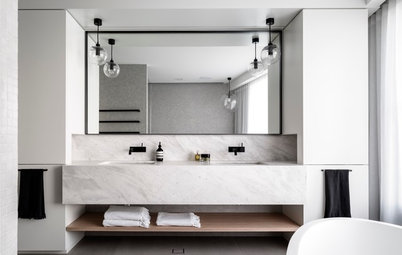
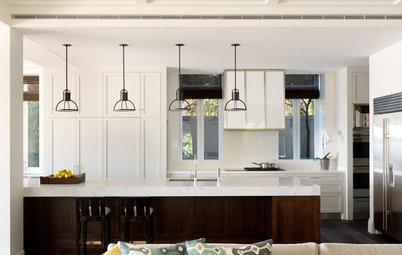
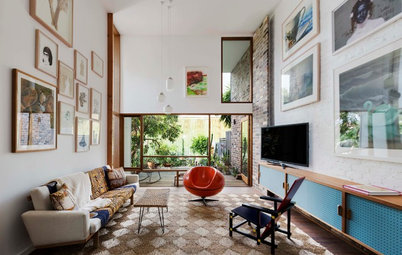
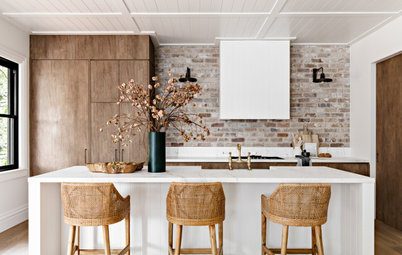

This is our arbor with timber and rebar. Honeysuckle Halliana growing up both sides. It was very cheap to make and design was a modified version of the one on the Bunnings website.
Arbors are time less elements in the sense they fit into any sort of garden over any period of time. Its the style and choice of materials that matter. Treated Bamboo is also a suitable option along with stone as we have both in abundance here in India.
If you are using metal be careful about the heat, you might want to use some temp rafters till the vines grow thick enough.
Porch swing